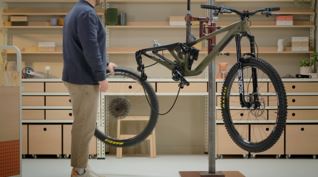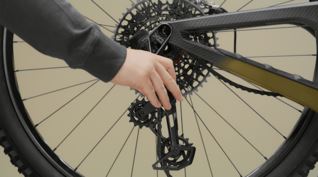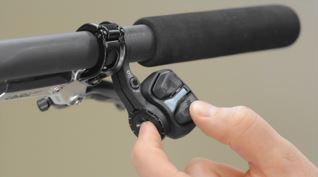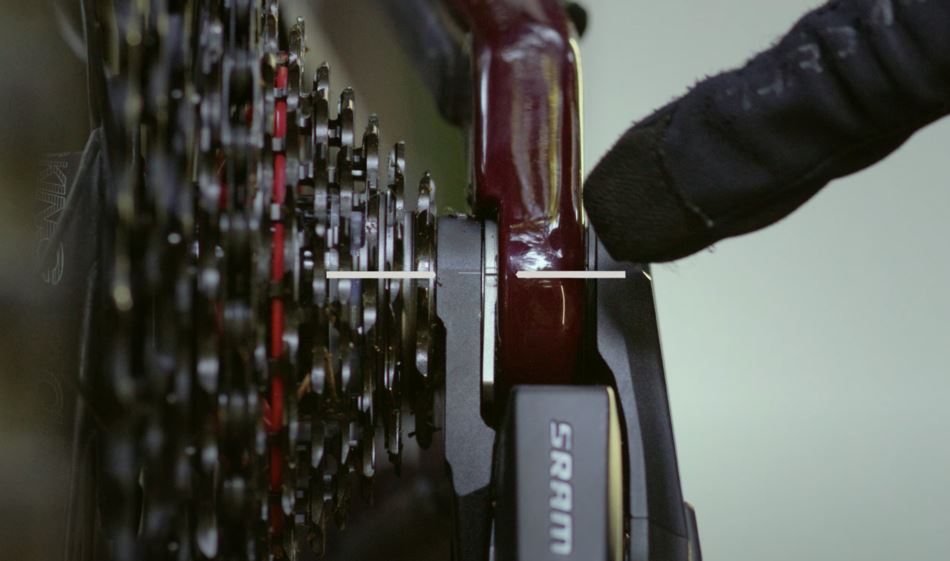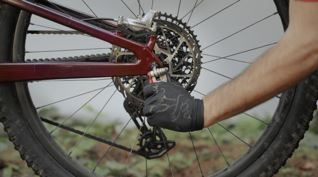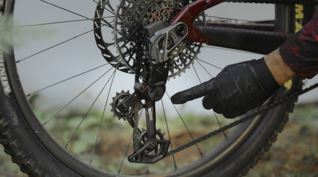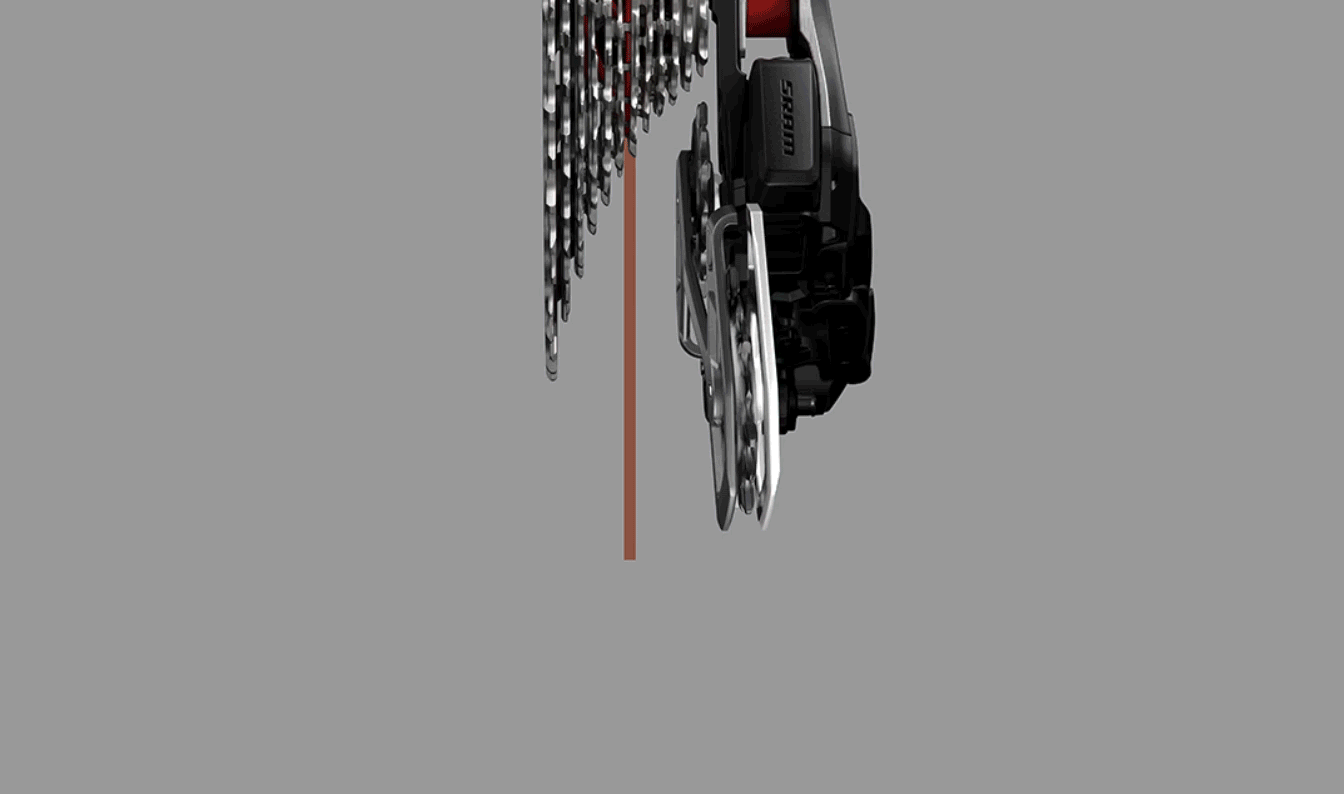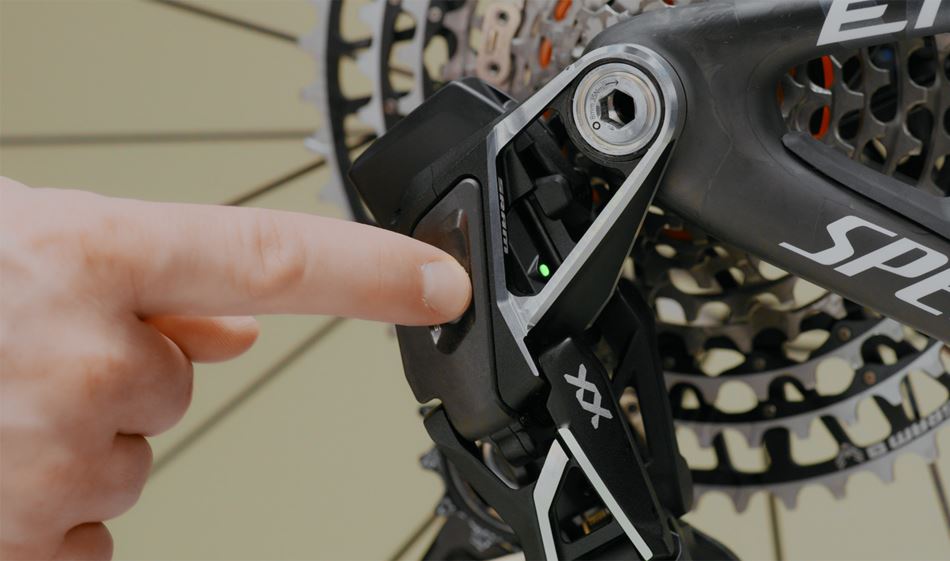RÉINITIALISATION EN CAS D’IMPACT SUR LE BORD DU SENTIER
La fixation Montage Direct de votre Eagle Transmission a été conçue pour pivoter en cas d’impact frontal afin de protéger votre dérailleur du danger. Une simple réinitialisation directement sur le bord du sentier peut être parfois nécessaire pour réaligner la position de votre dérailleur. Il y a deux façons de réaliser cette réinitialisation : une méthode très simple qui consiste à utiliser l’axe arrière ou une méthode plus manuelle qui peut être effectuée du bout des doigts.
Ce à quoi il faut prêter attention : si vous tapez votre dérailleur, vérifiez que le repère sur l’anneau cranté est aligné avec le repère de la fixation de Montage Direct. Si l’alignement est incorrect, une réinitialisation en cas d’impact sur le bord du sentier doit être réalisée.
